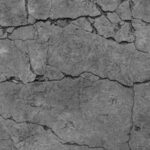In the modern construction industry, safety is paramount, particularly concerning fire protection. Among the various fire safety measures, intumescent paint has emerged as an indispensable solution. This innovative coating not only contributes to the structural integrity of buildings during a fire but also aligns with aesthetic and functional requirements. In this article, we delve into the principles of intumescent paint, its applications, and its significant role in Sydney’s construction projects.
What is Intumescent Paint?
Intumescent paint is a specially formulated fire-retardant coating that swells when exposed to high temperatures. Upon exposure to heat, the paint undergoes a chemical reaction, creating a thick, insulating char layer. This layer acts as a barrier, slowing the transfer of heat to structural elements such as steel, timber, or concrete. The primary purpose of this coating is to extend the time it takes for these materials to reach critical failure temperatures, thereby improving the safety of the building and allowing more time for evacuation and firefighting efforts.
Applications in the Construction Industry
The versatility of intumescent paint makes it suitable for a wide range of applications in the construction sector. It is particularly effective in protecting steel structures, which are vulnerable to rapid weakening under high temperatures. The paint can be applied to exposed beams, columns, and other steel elements, ensuring compliance with fire safety standards without compromising architectural aesthetics.
Timber structures, another commonly used material in construction, also benefit significantly from intumescent paint. By slowing the charring rate of wood, this coating helps maintain the structural integrity of wooden elements during a fire. Additionally, intumescent paint is used on walls, ceilings, and partitions to enhance compartmentalization and limit the spread of fire.
Advantages of Intumescent Paint
One of the key advantages of intumescent paint is its ability to combine fire resistance with design flexibility. Unlike traditional fireproofing methods, such as cladding or cementitious coatings, intumescent paint maintains the visual appeal of exposed structural elements. It can be applied in various finishes and colors making it ideal for projects where aesthetics are a priority.
Moreover, intumescent paint is relatively lightweight and easy to apply, reducing labor costs and installation time. Its compatibility with other coatings and substrates further enhances its practicality. With advances in technology, modern intumescent paints offer improved durability, ensuring long-lasting fire protection with minimal maintenance.
Sydney Examples: Intumescent Paint in Action
Sydney, known for its iconic architecture and rapid urban development, has embraced intumescent paint as a key fire protection measure. Several high-profile projects in the city demonstrate the value of this technology.
One notable example is Barangaroo, a world-class waterfront precinct. The extensive use of steel in the commercial and residential buildings within Barangaroo required robust fire protection. Intumescent paint was employed to coat steel structures, achieving the required fire ratings while preserving the sleek, modern aesthetic of the design.
Another example is the Sydney Metro project, Australia’s largest public transport infrastructure project. Intumescent paint has been extensively used in stations and tunnels to protect critical steel components and ensure passenger safety. The paint’s ability to provide fire resistance without adding significant weight was particularly beneficial in this context.
The redevelopment of the Sydney Opera House forecourt also highlights the application of intumescent paint. During recent renovations, the use of this coating allowed the preservation of the building’s structural elements while ensuring compliance with updated fire safety regulations. This approach balanced heritage conservation with modern safety standards.
Compliance and Standards
In Australia, the use of intumescent paint is governed by stringent fire safety standards, including the National Construction Code (NCC) and Australian Standards AS1530 and AS4100. These regulations specify the fire resistance levels required for different building components, guiding the selection and application of intumescent coatings.
Proper application is critical to achieving the desired fire performance. Factors such as the thickness of the paint, the type of substrate, and environmental conditions must be carefully considered. Professional applicators are typically employed to ensure compliance with manufacturer guidelines and regulatory requirements.
Environmental and Economic Considerations
As sustainability becomes an integral part of construction, intumescent paint aligns well with green building initiatives. Many modern formulations are low in volatile organic compounds (VOCs), contributing to better indoor air quality. Furthermore, the durability of intumescent paint reduces the need for frequent reapplications, lowering the overall environmental footprint.
From an economic perspective, the upfront cost of intumescent paint may be higher than traditional fireproofing methods. However, its ease of application, reduced labor requirements, and minimal maintenance often result in cost savings over the lifecycle of a building. Additionally, its ability to enhance the resale value of properties by ensuring compliance with fire safety standards makes it a worthwhile investment.
Challenges and Future Trends
Despite its many advantages, the use of intumescent paint is not without challenges. The initial cost can be a barrier for smaller projects, and improper application can compromise its effectiveness. Moreover, the performance of intumescent paint can be affected by environmental factors such as humidity and temperature, necessitating careful planning and execution.
Looking ahead, advancements in material science are expected to drive the development of more efficient and sustainable intumescent coatings. Research is focused on improving the thermal performance, durability, and environmental profile of these paints. Innovations such as nano-based intumescent coatings and self-healing paints hold promise for the future of fire protection.
Conclusion
Intumescent paint has become a cornerstone of fire safety in the construction industry, offering a unique combination of protection, aesthetics, and practicality. Its widespread use in Sydney’s iconic projects underscores its value in creating safer, more resilient buildings. As technology continues to evolve, intumescent paint will undoubtedly play an even greater role in shaping the built environment, ensuring that safety and design go hand in hand.
Read also: Why Foundation Repair is Crucial for Your Home’s Safety and Value



